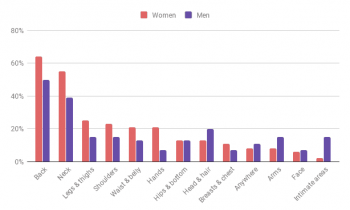[ad_1]
From the time Mae Jemison was a little girl, she was convinced that she would go to space. No one could tell her otherwise. She was sure that space travel would be as common as air travel by the time she was an adult. That prediction didn’t pan out, but that confidence combined with her intellect, curiosity, and the above-average encouragement of her parents drove Mae to do everything she wanted, including space travel.
Some people might become a doctor or a researcher, a dancer or an astronaut. But Mae became all of these things. Not everyone supported her non-traditional path—many people just pick a career and stick with it. Her path is impressive and through it all she gained a really interesting perspective on how education is approached, and what effects that approach has on society. After practicing medicine, joining a shuttle mission, appearing in Star Trek, and retiring from NASA, she became a voice for minority students and an advocate for integrating the arts and sciences in the standard curriculum.

Dancing with Apollo and Uhura
Mae Jemison was born October 17, 1956 in Decatur, Alabama. The family moved to Chicago when she was three in search of better schools, and she has always considered it her home.
As a child, she spent hours and hours in the library reading about science and astronomy. She passionately followed the Apollo missions and never missed an episode of Star Trek. Lieutenant Uhura was her chief inspiration for becoming an astronaut.
She fell in love with dancing at age eleven and took lessons in many different styles. When she wasn’t obsessing over science, her thoughts were consumed by the creativity and expression of choreography. This constant shift in her attention between the arts and sciences helped her appreciate the creativity of science and the analytical side of art, a connection she believes is key to building a good future for society.
Mae graduated high school at age 16 and entered Stanford the same year on a National Achievement Scholarship. It wasn’t until years later that she realized the level of confidence her parents must have had in her ability to survive thousands of miles away from home. She points to her stubbornness and youthful arrogance as her weapons against uncertainty and the sexism she encountered from some professors who ignored her questions and belittled her observations. By the time she graduated Stanford in 1977, she had earned a BS in chemical engineering, a BA in African and Afro-American studies. She had also choreographed a music and dance production, and headed the Black Students’ Union.

Future Astronauts Without Borders
After graduation she was torn between going to medical school and taking a shot at being a professional dancer. Though her parents were permissive, they were also practical. As Mae likes to say, her mother helped her make that particular decision.
In 1981, Mae earned her medical degree from Cornell Medical College. During graduate school she spent time in Kenya, Thailand, and Cuba providing primary medical care to the citizens.
After a hospital internship and a brief stint as a general practitioner in California, Mae joined the Peace Corps as a medical officer. She spent most of her time in Sierra Leone overseeing hundreds of volunteers. When one of them came down with malaria, Mae was sure that it was bacterial meningitis instead. He would soon die without the proper care, but they weren’t equipped to treat it.
She ordered an emergency medical evacuation to an Air Force base in Germany, which cost upwards of $80,000 to set in motion. The embassy gave her trouble and questioned her authority to do it, but she stood her ground and they called it in. Mae stayed by the patient’s side for 56 hours until he was successfully treated for meningitis.


Space: The Final Frontier
Around this time, Mae decided it was about time to get to space, so she applied to NASA. The Challenger disaster delayed her application, but she re-applied in 1987 and was accepted the same year. On September 12, 1992, her childhood premonition came true. She flew to space aboard Endeavour as part of STS-47, a joint mission between the US and Japan to experiment with life science and materials processing in microgravity.
During the eight-day tour, Mae did bone cell research, performed weightlessness and motion sickness experiments on herself and other crew members, and oversaw a zero-G tadpole growth experiment.
The most memorable moment for Mae happened on the flight deck. The commander invited her upstairs to check out the view as the shuttle passed over Chicago. She looked down and smiled on the memory of that little girl who was certain she would go to space.
After Mae returned to Earth, Levar Burton discovered she was a Trekkie and asked if she wanted to be on an episode of The Next Generation. Mae appeared as Lieutenant Palmer in the season 6 episode “Second Chances”, the one where Riker encounters a duplicate of himself created years earlier.
Life After NASA
Mae resigned from NASA in 1993 to explore the impact of technology on society. Soon after, she started an international space camp called The Earth We Share that focuses on scientific literacy and problem solving for middle- and high school kids. She is the current Principal of the 100 Year Starship Project, a DARPA-NASA initiative aimed at advancing interstellar travel.
Today she spends much of her time giving talks about the importance of contributing to culture in ways that positively affect the future. She gave a TED talk in 2002 about the importance of re-integrating science and arts in education, because they both have a big impact on future generations. To her, intuition and analysis are equally important tools in our attempt to understand the universe around us.
[ad_2]
Source link





